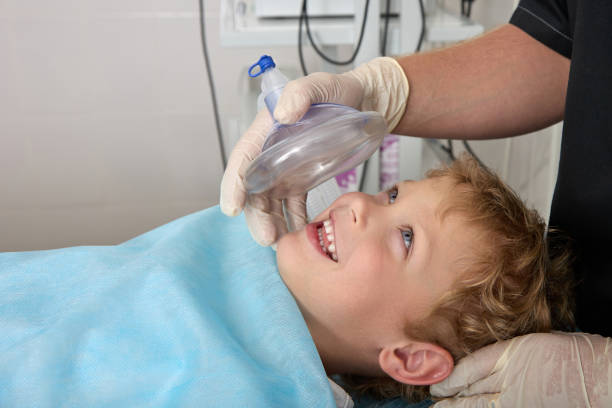Navigating the dental world can be daunting, especially when it comes to ensuring your child’s comfort during a procedure. Dental IV sedation is one of the methods used to help kids undergo dental treatments without anxiety or pain.
This blog aims to demystify the process of dental IV sedation for pediatric patients. The goal is to make it simpler for parents to understand and make informed decisions
We’ll explore what dental IV sedation is, its benefits, and safety measures. Read on and learn how to prepare your child for the procedure.
What Is Dental IV Sedation?
Dental IV sedation is also known as intravenous sedation. It involves administering sedative drugs directly into the bloodstream through an IV line.
This method ensures that the sedative takes effect quickly. It can also be easily adjusted throughout the procedure. It’s primarily used for patients who experience severe anxiety or need to undergo extensive dental work.
How Does It Work?
The sedation is administered by a trained professional, typically an anesthesiologist or a dentist with special certification. The drugs used help to relax the patient while still allowing them to respond to verbal cues, ensuring a better experience.
Types of Sedation
There are different levels of sedation, ranging from mild to deep. The type and dosage depend on the child’s needs and the complexity of the dental procedure. Your pediatric dentist will recommend the most suitable option after a thorough evaluation.
Advantages of IV Sedation
Dental IV sedation offers several benefits that make it a preferred choice for many pediatric dental procedures.
Immediate Effect
One of the main advantages is the immediate onset of the sedative effects. This allows the dentist to start the procedure quickly, reducing the overall time spent in the dental chair.
Adjustable Dosage
Since the sedative is administered directly into the bloodstream, the dosage can be easily adjusted. This flexibility ensures that the child remains comfortable throughout the procedure, even if it takes longer than expected.
Reduced Anxiety
IV sedation helps alleviate dental anxiety in children and the fear associated with dental visits. This is particularly beneficial for children who have had traumatic dental experiences in the past or suffer from dental phobia.
Safety Measures
Safety is a primary concern for any medical procedure, and dental IV sedation is no exception. Several precautions are taken to ensure the child’s well-being.
Pre-Sedation Assessment
Before the sedation is administered, a comprehensive children’s oral health assessment is conducted. This includes reviewing the child’s medical history, allergies, and any medications they are currently taking.
Monitoring During the Procedure
Throughout the procedure, the child’s vital signs, such as heart rate, blood pressure, and oxygen levels, are closely monitored. This continuous monitoring helps to detect and address any potential complications promptly.
Post-Sedation Care
After the procedure, the child is closely observed until the effects of the sedation wear off. Parents are given detailed post-sedation care instructions to ensure a smooth recovery at home.
Preparing Your Child
Preparing your child for dental IV sedation can help alleviate their fears and make the experience less stressful.
Explain the Process
Explain the procedure in simple terms that your child can understand. Reassure them that the sedation will help them feel relaxed. Assure them that you’ll be there with them before and after the procedure.
Follow Pre-Sedation Instructions
Your dentist will provide specific instructions on what your child can eat or drink before the procedure. It’s crucial to follow these guidelines to avoid complications.
Comfort Items
Allow your child to bring a favorite toy or blanket to the appointment. Familiar items can provide comfort and make the experience less intimidating.
Common Questions About IV Sedation
Parents often have questions about dental IV sedation. Here are some of the most common queries.
Is It Safe?
Dental IV sedation is generally safe when administered by a trained professional. The benefits of sedation often outweigh the risks, especially for anxious children or those undergoing extensive dental work.
How Long Does It Last?
The effects of the sedation can last several hours, depending on the dosage and the individual child’s metabolism. Your dentist will provide guidance on when your child can resume normal activities.
What Are the Side Effects?
Common side effects may include drowsiness, nausea, and minor bruising at the injection site. These side effects are usually mild and temporary.
The Importance of Choosing a Qualified Professional
Ensuring your child’s safety and comfort during dental procedures requires choosing a qualified professional.
Certification and Training
Ensure that the dentist or anesthesiologist administering the sedation has the necessary certifications and training. This ensures they are knowledgeable about the latest practices and safety protocols.
Experience with Pediatric Patients
Experience matters, especially when it comes to treating children. A professional with experience in pediatric sedation will be better equipped to handle any challenges that may arise.
Facility Accreditation
Choose a dental facility that meets stringent accreditation standards. Accredited facilities are regularly inspected to ensure they adhere to high safety and quality standards.
Post-Procedure Care
Proper care after the procedure is crucial for a smooth recovery.
Immediate Care
After the procedure, allow your child to rest and recover. They may feel groggy or disoriented, which is normal. Ensure they are supervised until the effects of the sedation have completely worn off.
Hydration and Nutrition
Encourage your child to drink plenty of fluids and eat light, easy-to-digest foods. Avoid giving them heavy or spicy foods immediately after the procedure.
Follow-Up Appointment
Schedule a follow-up appointment with your dentist to ensure everything is healing properly and to address any concerns you may have.
Prepare Your Child for The Process of Dental IV Sedation
Dental IV sedation can make dental procedures less stressful for children. Understanding the process and benefits helps parents make informed decisions. Choose a qualified professional and follow all care instructions. This way you can ensure your child’s safety and comfort.
Always prepare your child by explaining what to expect and providing comfort items. Post-procedure care is also essential for a smooth recovery. With the right approach, dental visits can become a more positive experience for both parents and children.
Enhance your reading journey by exploring more articles on our blog. There’s so much more to discover across a myriad of topics!




